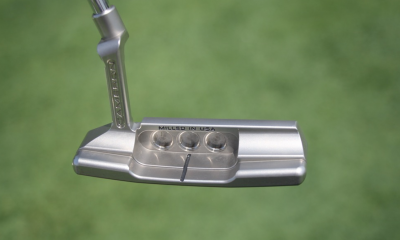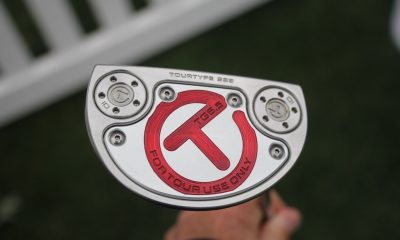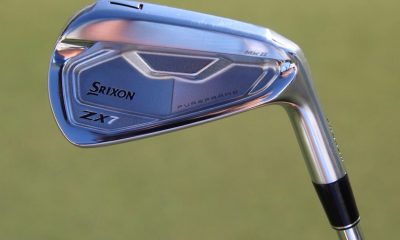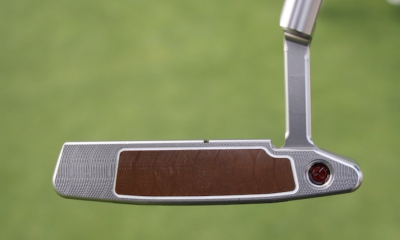Opinion & Analysis
2023 U.S. Open Betting Tips: Back this LIV pro for glory in the City of Angels

Major number three already, and we are off to Los Angeles Country Club for what is supposed to be one of the world’s great courses.
This isn’t a travel guide, though, and you’ll find volumes written about location, what it means to the USGA to play here and yada yada.
For us, it’s ‘simple.’
7400+ yards, par-70, sloping fairways, thick rough and tough-to-hold greens.
Should it stay dry, bombers will be wary of running out of the short stuff into thick, Bermuda rough. For the shorter hitters, they will need to find outstanding accuracy with clubs of lesser trajectory. Hit the right part of the angled greens, or pay for it.
History dictates that an elite player wins the US Open, with previous top results being made of the odd interloper. Whatever the result, look for a golfer with all aspects of his game close to their peak. You don’t win a US Open by suddenly finding your A-game.
Respect to all at the top, and whilst he has six wins since the start of 2022, Scottie Scheffler still failed to convert at East Lake, Kapalua and Bay Hill. In the last couple of months, the world number one has failed to turn promising half-way leads into victories at either the Byron Nelson or PGA Championship. At single figures, I greedily need more.
Masters champ Jon Rahm gives the impression he can turn it on at any given time, and came off a withdrawal and poor Match Play to win his second career major. With that in mind, his return to form at Muirfield gives his supporters hope that he can win for the first time since overcoming Brooks Koepka in a bizarre final round at Augusta. he is preferred to Rory McIlroy, who again failed to justify very short odds, this time when going for a three-peat in Canada last week.
Granted, the Northern Irishman carried another bag of weights around Oakdale, but it wasn’t the first time we have seen him fail to kick on from a good position, and this won’t be the place to try and chase his first major in nine years.
For me, there are no doubts about Brooks Koepka, and any double-figures should be snapped up.
The 33-year-old is a major king, and this yardage and these conditions suit every aspect of his game.
Koepka has nine PGA Tour wins – five majors and four non – and all are important pointers this week.
Of the ‘rest’, Koepka won the 2015 Phoenix Open beating future Masters champ Hideki Matsuyama and past Augusta winner Bubba Watson, into second. The 2018 CJ CUp victory saw him beat 2019 US Open winner Gary Woodland, whilst he put 2012 US Open champ, Webb Simpson, in his place at St. Jude.
Finally, whilst Xander Schauffele has not yet won a major, he’s come damned close (more of that soon) and again boosted the ‘regular event’ form of BK, finishing a shot off him at TPC Scottsdale, a course with (perhaps spurious) links to LACC.
Koepka’s form in 2023 suggests he can repeat what he did when winning the 2019 PGA (7400-yard par-70 Bethpage). On that occasion, he had Dustin Johnson, Patrick Cantlay, Rory McIlroy, Deki and Xander behind, as he did when winning his third PGA Championship at Oak Hill just a month ago.
The headline selection has no official stats from the LIV Tour but at the two completed majors of 2023, he has shown he is still amongst the best of his generation.
For the PGA and the Masters, the selection ranked seventh and 16th off-the-tee, fifth and second for approaches and second and ninth for tee-to-green. Throw in a pair of putting numbers that show a 4-shot-plus gain with the flat stick and he should be closer to favoritism this week.
Even taking into account the one missed-cut, and a 55th when totally out of form, Koepka’s 10 tries at a 7400-7600-yard par-70 track sees him average 18th place, and I have no doubt that figure will be heavily reduced by the 72nd hole at LACC this week.
It’s very difficult to look past the top 12 or so for the outright winner here and, with an improving short game, Viktor Hovland was very tempting at 16/1.
Instead, at half-a-dozen points bigger, I’m rowing in with a player I feel must win a major at least once in his career.
29-year-old Xander Schauffele has done everything but win one of the coveted four, and has yet another chance to break that maiden.
A local man, who attended California State and lives in LA, Xander has one of the best major records in the field – all without getting that vital win that defines a golfer’s career.
Runner-up, third and 10th at Augusta in three of the last five years, he betters those figures at this tournament, racking up a sequence of 5/6/3/5/7/14, two of those coming at the lengthy Shinnecock Hills and Winged Foot, as well as a couple being in his home state.
Following a withdrawal with injury at the seasonal opener, Xander has made all 12 cuts this year, and the quarterfinal of the Match Play, losing to an inspired McIlroy after extra holes in a high-quality match.
Given the elevation changes of the Renaissance Course, Xander’s 2022 Scottish Open win may be significant, but it’s the consistency of his tee-to-green game that keeps him in contention at these difficult and high-scoring events.
Currently ranking third for overall performance over the last 12 weeks, and (apart from Bay Hill, his only flop) with a minimum gain from tee-to-green of 2.5 strokes this year, he has everything ready for another top finish.
Justin Rose had chances to do even better at Augusta, Oak Hill and last week in Canada, but the fact he went into Sunday’s back-nine with a chance bodes well for this tougher test.
The 2013 US Open winner has always had a practical outlook for this event. He recently told Breaking News that his win at Merrion was built on the thought, “it was a US Open so you build your game plan in a way to think, ‘How can I get round this course without making mistakes and shoot even par?’” That might do fine as a plan this week.
The 42-year-old has earned 12 top-10 finishes in majors since that victory, including at the ‘similar’ Shinnecock Hills, and when third at Pebble Beach, scene of his first victory for four years.
Taking a couple of events to resettle after the win, Rose has made his last seven cuts, including a top-six at The Players, 16th at Augusta (top-10 into Sunday), ninth at the PGA (top-five into the final round) and last weekend’s eighth place finish.
Rose averages around 20th for tee-to-green figures over the same period, a number that should see him thrive around a course that will not offer up the plentiful birdies sought by the more aggressive players. He can also repeat the payout provided at Oak Hill by being ‘top Englishman’ in a five-man field.
There are a handful for special bets, but two names stand out – Wyndham Clark and Gary Woodland.
29-year-old Clark has no major form to speak of. In fact, the figures are frightening, but there is cause to be hopeful of a top-20 finish from this improver.
Frequently recognized for his quality tee-to-green game, the Scottsdale resident has hidden form to go along with his maiden victory at Quail Hollow in May, an event that saw him thrash Schauffele by four shots, with Tyrrell Hatton, Tommy Fleetwood and a host of fancied players well behind.
That particular event seems to throw up US Open names, with winners Lucas Glover, Webb Simpson, Dustin Johnson and Matt Fitzpatrick, all finishing runners-up in Carolina. Take a peek at who was a silver medalist this year….
That first victory was always coming, with form often hidden by poor final rounds.
At St. Jude, Clark sat inside the top-10 before finishing 28th; in Canada he led till halfway before recording a seventh place finish, and at the Corales, the eventual sixth place was three places off the number after 54 holes.
The Wells Fargo champion has three outings at Houston, his only recorded efforts over a long par-70, and, again, his play is better than the numbers on screen.
He fell from sixth and seventh place through the first three rounds to finish 41st in 2021, whilst a year later Clark sat in the top three going into Sunday, when a 73 saw him drop to 16th.
Allow the one missed-cut of the year – at the PGA – and instead look at last week’s 12th place at Muirfield, especially as he sat in the top-five going into the final round.
Hitting the ball well, he ranks fifth in performance over 12 weeks, striking up good numbers for driving distance, greens, scrambling and putting. Whilst I couldn’t be on for the outright, he looks a fairly comfortable bet for a place on the front two pages.
2019 US Open champ Gary Woodland has started to climb the world rankings again after six top-10 finishes since the start of 2022, and is showing enough consistency to believe he can rack up the third top-20 of his US Open career.
Just four years ago, the 39-year-old led home a top-10 that included Koepka, Rahm, Rose and Schauffele, and whilst he hasn’t won since, there is plenty in last year’s top-10 at Brookline and Houston to be encouraged this will suit.
’23 has been kind to this powerful driver, with a top-10 at local Riviera and when going into Sunday at both Augusta and Quail Hollow.
The numbers make it clear – Woodland has an appalling short game, but that’s why he can be ignored at birdie-fests, and backed when his tee-to-green game will make inroads. Ranking 25th for driving distance and 30th for greens for recent weeks, I’ll take the chance that it does so around here.
Recommended Bets:
Outright
- Brooks Koepka
- Xander Schauffele
- Justin Rose
Specials
- Justin Rose – Top English
- Wyndham Clark – Top-20
- Gary Woodland – Top-20
- LIKE5
- LEGIT1
- WOW0
- LOL5
- IDHT0
- FLOP0
- OB0
- SHANK0
Opinion & Analysis
The Wedge Guy: What is a “wedge” anyway?
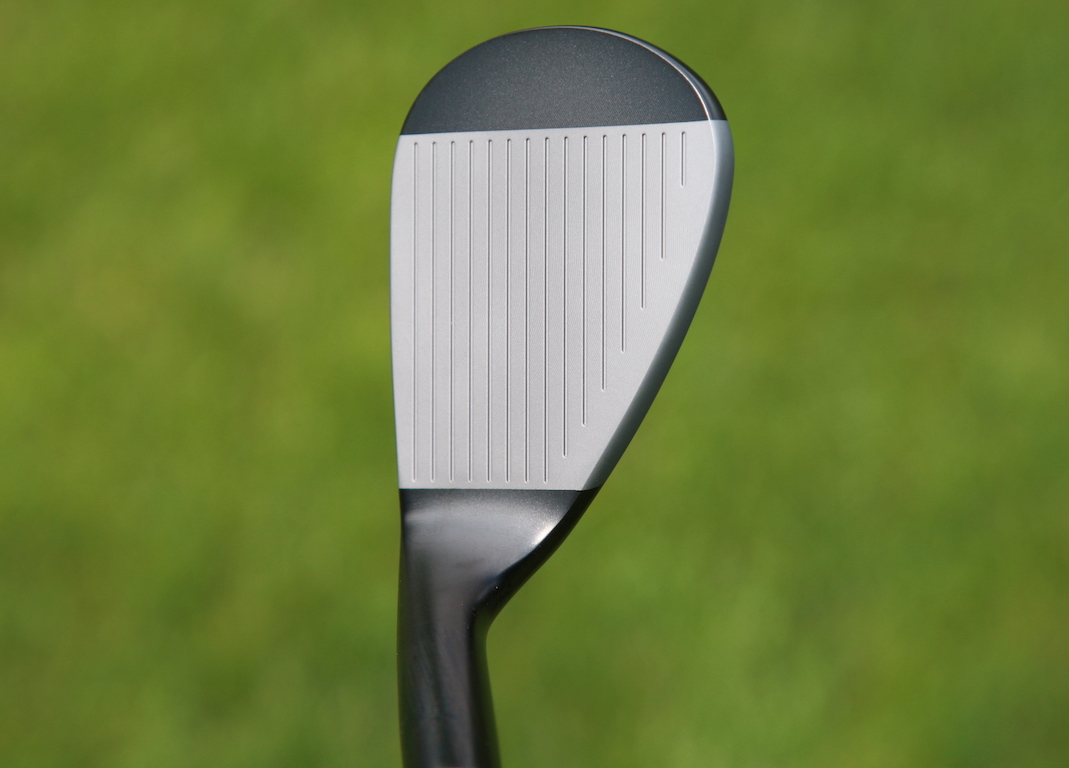
This week’s post is somewhat of a continuation of the recent path we’ve been on, discussing the nuances of those high-loft clubs at the short end of our sets – those specialty clubs we call “wedges.” The real question might be:
“What is a ‘wedge’ anyway?”
Can that name be given to any iron-type club simply based on its loft? And if that’s the defining criteria, where do “wedge” lofts begin? And can clubs of all different design configurations still all be “wedges” just because they fall into that arbitrary range of lofts?
To the first question, my historical research indicates the term “wedge” first came into common use in the 1930s with the invention of the original sand wedge, generally credited to Gene Sarazen. As the legend goes, after flying with Howard Hughes and observing the use of flaps to make the airplane go up or down, he conceived the idea of a downward angle on the sole of a niblick to make it “reject” from the sand. So, after numerous prototypes and testing, the club that came to be known as the “sand wedge” was born.
Those clubs were about 55-56 degrees of loft, and quickly became widely adopted because of this revolutionary performance from bunkers. My guess is the term “wedge” was applied to that club because that’s exactly how you used it – you “wedged” the club between the ball and the turf – loft made the ball go up and the sole made the club “bounce” off the turf.
The professionals of the 1940s and 1950s began to use their sand wedge for more specialty shots around the greens, but most often relied on their highest lofted iron for most routine pitch shots. In sets back then, that club had 50-52 degrees of loft and was often called a “pitching wedge,” but some labeled it simply a “10-iron,” or in Ben Hogan’s case, the Equalizer.
But that club looked like the irons it matched, bearing little resemblance to the specialty “sand wedge” with its big flange and heavy sole, but I really don’t know why it was also called a “wedge.”
As iron lofts began to strengthen in the 1980s, the need for a “gap wedge” came about, as that valuable 50- to 52-degree iron was disappearing. Then at the other end of the set, the “lob wedge” appeared. Both of those clubs bore some resemblance to the sand wedge because they were most often presented as loft extensions in manufacturers’ wedge product lines.
So, now let’s fast-forward to 2023. Most iron sets have a “P-club” of rarely more than 45 degrees, and we’re seeing more and more with as low as 42 degrees of loft. Many of the iron models offer set-matching “wedges” labeled “A”, “G”, “S”, etc. to extend the iron design up into the higher lofts. These all look almost identical to the 6-iron in that set, because this industry is still caught up in the notion of “matched” sets. (But that’s a topic for another day)
In the “wedge” category, product lines can be confusingly broad, with lofts from 46 to 64 degrees and all kinds of specialized sole configurations. So, back to the original question — what is a “wedge?”
Think about it this way.
At the long end of your set, the club with 22 to 24 degrees of loft might be configured as a fairway wood, or a hybrid, or a hollow high-tech “driving iron,” or simply the 4- or 5-iron that matches your irons. Each golfer can determine which configuration serves him or her best at that loft and the distance it produces.
Likewise, the clubs at the higher loft end of your set might look like your 6-iron, or might look like a traditional wedge, or might look like one of the numerous specialty wedges with a wider sole. My “wedge” designs for Edison Golf don’t really look like any of those.
But just like those options you have to build out the long end of your set, each of those various ways to configure a higher-lofted club will produce different results. So, can we really lump all of these high-loft options into a singular category and call all of them “wedges?”
Or is it time to come up with a totally different word to describe those high-loft clubs in our bags that have the assigned task of delivering consistent results at a range of distances as we get closer to the green?
I’m not sure I have the answer, but it should be fun for all of us to stop and ponder the question? Your thoughts, everyone?
- LIKE17
- LEGIT6
- WOW0
- LOL0
- IDHT0
- FLOP0
- OB0
- SHANK4
Opinion & Analysis
The best bets for the 2023 John Deere Classic

Probably not quite the ‘classic’ of its name, but the John Deere provides some recall of the good and bad of golf betting.
Back in 2013, a young Jordan Spieth made his reputation by sinking a 72nd hole bunker shot to put the willies up course specialist and lumpy bet Zach Johnson. As is the way, the Deere Run guru then bogied his final hole, going on to defeat in a three man play-off.
Fast-forward nine years and J.T Poston landed a confident wager in last year’s event, leading all the way to land a comfortable three shot victory. Can’t wait to see which way it goes this time.
Expect birdies galore around the course this week, with very little difficulty in finding fairways.
With most of the field managing to hit the large greens, GIR stats are less worthy than they might otherwise be. Instead, players need to hit it close enough so they make the majority of putts. As with previous winners Bryson DeChambeau and Lucas Glover (to name just two), high-class ball-strikers can give themselves enough chances to land their share of birdies.
Current form looks a must here this week, with cross-over form from Travelers including Spieth, DeChambeau, Daniel Berger and Brian Harman, and Rocket Mortgage champions Cameron Davis and DeChambeau showing up well at this week’s venue, all recording a similar winning score.
When the market opened, I felt Emiliano Grillo would be third or fourth favourite, so finding him at a bigger price than PGA maidens Denny McCarthy, Adam Schenk and new star on the block Ludvig Aberg was a pleasant surprise.
The three names seem to have more improvement in them than the 30-year-old Argentine, but none have the victories, or the course form, to justify being ahead in the market.
McCarthy has lifted his reputation even further with his play-off loss at Muirfield and leading to halfway at River Highlands, but he faded away when under the cosh here last year, allowing the experienced Grillo to be the closest challenger to Poston (alongside Chritiaan Bezhuidenhout), whilst the 23-year-old Aberg may well be the Second Coming but faded away late on at both River Highlands and Detroit, recording large minus figures for his iron play. Sub 25-1? Really.
Schenk makes a lot of sense on recent form, with iron play making up the most of his impressive tee-to-green stats, but at anything over 25/1 in a weak field, the Charles Schwab winner appeals more than anyone.
Grillo ranks 3rd on tour-tips overall ranking for this event, with half-a-dozen instances of top-25 tee-to-green play in his last eight starts. In the same period (since Bay Hill) the Argentine has listed in the top 12 for approach play on five occasions, leading the field at the Arnold Palmer and ranking 12th at Travelers.
The 15th place at River Highlands on his last outing is the best finish there since 2018 (19th) after which Grillo suffered a slump, falling down the world rankings from 47th to 156th during 2020.
2021 saw him come back with a runner-up behind Stewart Cink at Harbour Town, following up a year later when matching his second place here with a silver medal behind a rampant Tony Finau at the 3M.
Grillo was trending in the right direction before his play-off win at Colonial, with form figures of 7/5/23 and an unconcerning missed-cut at the PGA, and the win, from a nervous Schenk, and the world number one Scottie Scheffler, reads very nicely in this field.
Whilst never the greatest putter in the world, that aspect has improved greatly. Now ranking in 6th for putting average off a large number of greens hit, he has positive figures at five of his last seven starts and comes here recalling last season’s +8.5 strokes tee-to-green and +4 strokes for the flat stick.
Doug Ghim is playing nice golf at the moment, several years after being touted as a superstar.
This test suits the short-hitting but accurate player, and with form figures of 33/15/12/19/27, he’s the type to appeal as a solid top-20 bet.
For win purposes though, I’ll revisit a Grillo formline and row in with the man that lost to the selection by just one shot at the Web.com Tour Championship some eight years ago, Chez Reavie.
I put up the 41-year-old a couple of weeks ago at a monster 200/1 to regain his 2019 Travelers crown, and he gave us a thrill until fading away on Sunday, yet still paying out a healthy return for a place.
A 2021 finish of 18th and a previous pair of top-15 finishes led to him going off around 50/1 for this event 12 months ago, and I’m not sure he’s done anything, or faces tough enough opposition, to be 10 points longer.
Previous to his latest win at the Barracuda in July last year, the three-time winner posted 27th at Colonial and 8th at River Highlands. This time, he comes here after being 12thg at the halfway stage of the Charles Schwab and in second place after three rounds in Connecticut.
Now, with six consecutive cuts made and four of his last eight rounds in the low-to-mid-60s, he arrives after recording an average of between 5.5 and 6.0 strokes for approaches and tee-to-green, a repeat of which will see him bang there come Sunday evening.
With River Highlands and Deere Run form in abundance, he’s yet another old campaigner I feel will prove too much for the young guns.
Finally, we’ll go with a pair of three-figure pokes, firstly in the way of David Lipsky, a player with two wins on the European Tour at tracks that require a touch of guile over strength.
It may be five years since the 34-year-old worked his way around Leopard Creek to back up his Crans victory, but his career has not been devoid of highlights, including a four shot victory over Taylor Pendrith at the short San Antonio course in Texas.
2021 saw him record six top-10 finishes, including at Abu Dhabi and Valderrama, whilst a year later he finished top-10 at the Corales and better-class Mexico Open behine Jon Rahm and Tony Finau.
A season-opening top-five at the Sony promised much and, whilst it hasn’t gone that well, Lipsky can still boast top-20 finishes at the Charles Schwab and Memorial, where at halfway he was first and sixth respectively.
Always around 24th place last season, Lipsky has shown he can raise his game at a lower level, whilst two of his three victories have come in 25-under and 18-under. He can do a job when conditions suit, and at 125/1, he’ll do as a chance to gain some decent each-way money.
Next to him at 125s is 26-year-old rookie Carl Yuan, now finding his feet at this level yet massive amounts of points bigger than some of his more sexy rivals.
A winner on his home tour, he had a remarkable 2022, winning in Louisiana, and racking up a further four top-five and four top-10 finishes and getting himself in at the highest level a year after he was due.
Explaining why he missed promotion 12 months earlier, Yuan said it was every player’s dream to represent their country, so popped off to The Olympics rather than guarantee his PGA card through the final six events of 2021.
Still, he’s here now and, after a slow start, made three consecutive cuts – Houston, RSM and Sony – before another lull from mid-January.
Shaking that off, he bounced back to form with the halfway lead at the better-class Canadian Open, stating, “That’s my goal [retaining his card] coming into the week. That’s my No. 1 goal. Not a result goal, just like being in the present, hitting shot by shot and, yeah, being out here trying to have the most fun. All of it.”
It seems to be working as he finished a highly respectable 18th before landing another top-20 at Detroit last week after a third-round 64 had gotten him inside the top-10 going into payday.
This massive hitter will be able to club down for most of this week’s test, ensuring he builds on some steady seasonal figures for tee-to-green and with untold improvement to come.
There is a chance he needs a much bigger environment to thrive, but as an unexposed, potentially high-class improving recruit, he needs taking a chance with.
Recommended Bets:
- Emiliano Grillo
- Chez Reavie
- David Lipsky
- Carl Yuan
- LIKE1
- LEGIT0
- WOW1
- LOL0
- IDHT0
- FLOP0
- OB0
- SHANK0
Opinion & Analysis
The Wedge Guy: The case against set-match wedges
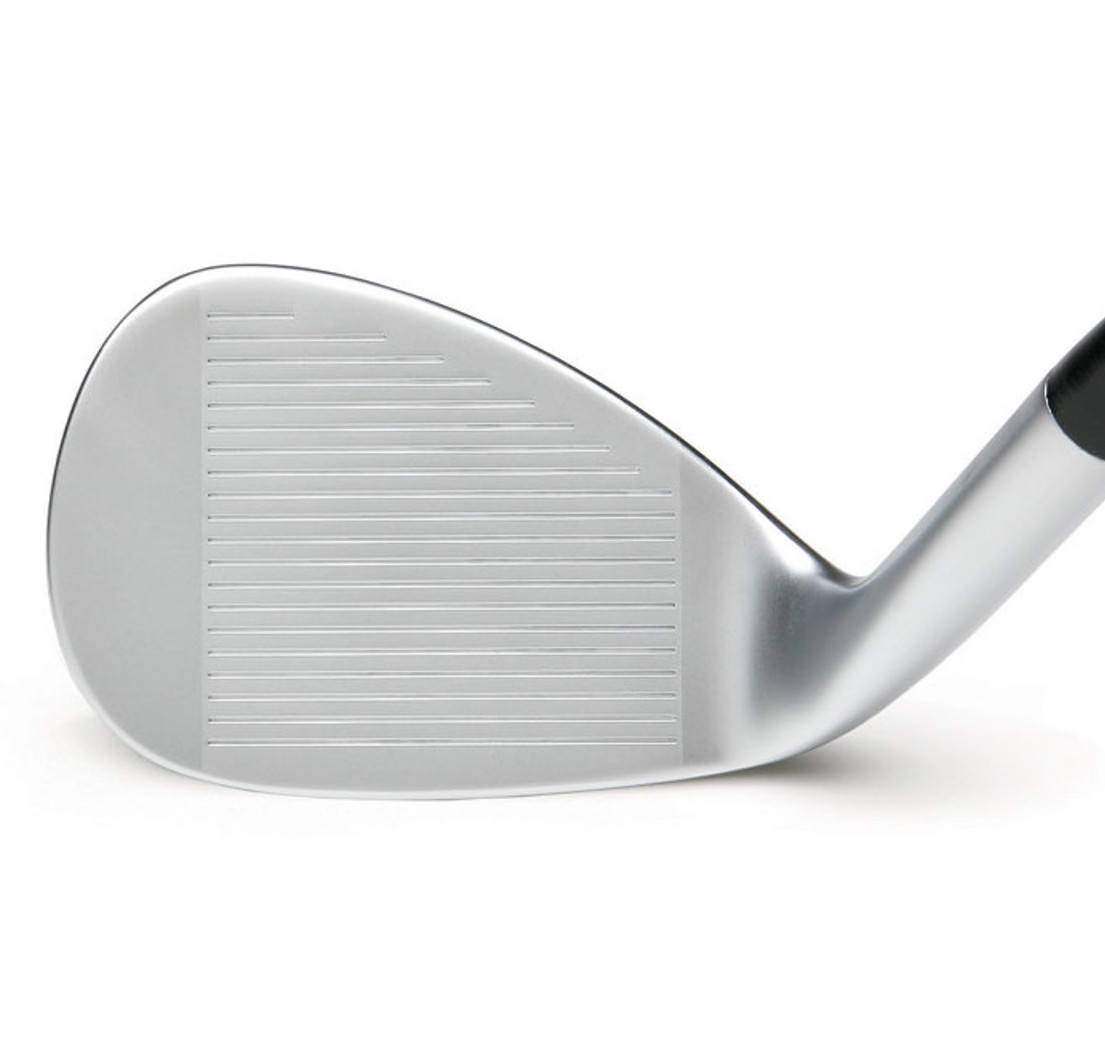
One side-effect of the relentless effort by major iron makers to win the “launch monitor wars” that pit one 6- or 7-iron against another is that the lofts throughout sets of irons have been continually strengthened to a point of what I consider ridiculousness. There are two major problems with this trend in specifications for sets of irons. The first is that to try to win the “launch monitor wars,” iron makers have to try to make their 6- and 7-irons go farther than the other guys’. That means making those mid-irons stronger in loft and using a bit of “trickery” by increasing the loft gapping between your higher-loft scoring clubs so that your “P-club” doesn’t get too strong, too (though modern “P-clubs” of 43-45 degrees of loft are really not “pitching wedges” at all).
Historically, iron lofts progressed through the set at four-degree loft intervals, and .5-inch length differentials. This wasn’t happenstance at all, it was the result of rigorous testing by professionals and average golfers. Those technical differences typically delivered consistent distance gapping from the pitching wedge down through the set.
A review of the specifications of almost every set of irons on the market today, however, will reveal that loft differentials are now five degrees between the short irons and as little as two degrees at the long end of the set. This is totally counter-intuitive to how you can improve your short iron and wedge precision. Why in the world would you want to increase the distance differences between your shorter irons, which is where you most need distance control precision? After all, a 6-iron shot that is 25 to 30 feet long or short is pretty darn good, but it sucks if you have a 9-iron or wedge in your hands.
Understand that the “holy grail” of distance in golf club design is the combination of high launch and low spin. Achieving this is relatively simple – put as much mass in the bottom of the golf clubhead as possible.
So, the second major problem caused by the “launch monitor wars” is how modern irons are designed. The early “solution” to longer-hitting mid-irons was extreme sole-weighting with thinner faces. The newer technologies we’re seeing in irons combine even faster faces with heavy tungsten inserts in the sole of the club.
But the problem with almost all irons on the market – especially in the “game improvement” category – is that this same design and technologies are applied throughout the “matched” set of irons and even into “wedges” that display that same design concept. And that’s where your prime scoring clubs are being compromised.
High launch and low spin are great in a driver or fairway wood, and maybe even desirable in your middle irons — but that is the exact opposite of what you need to achieve consistent distance precision in prime scoring range when you have a short iron or wedge in your hands.
Almost all accomplished players have learned to hit their short irons and wedges with a penetrating ball flight and lots of spin to stop the ball in its tracks once it hits the green. So why would you ever want to play short irons and wedges that have all their mass at the bottom, which is designed to deliver the exact opposite of what you should be seeking?
Now, let’s go back to the title of today’s post.
Either your 6- or 7-iron is 28 to 30 degrees of loft – but have you ever stopped to think that this loft is closer to that of your driver than to where your “wedge” lofts begin (around 45 degrees)? I feel certain that no golfer in the history of the world has ever proclaimed
“I really like my 7-iron. Can you make me a driver that looks just like it?”
In fact, from your 7-iron down to your driver, you likely have at least four, if not five, completely different clubhead designs in order to optimize performance at a given range of lofts. That iron design might evolve to a driving iron design a few degrees lower, then most likely to a hybrid design a few degrees lower than that, then to a fairway wood as lofts get below twenty degrees, and finally to a driver at 9 to 12 degrees.
So, if it takes four to five completely different clubhead designs to optimize performance at the long end of the set, how realistic is it that only one design throughout your set of irons can deliver the performance and precision you need at the short end?
I’ve always believed that every club in your bag has a specific purpose and expectation. Fairway woods, hybrids, and long irons are to get you close to or maybe even on the green from a long-distance approach. With middle irons (5 through 7 or 8), your goal is to get on the green within a reasonable distance, or certainly not to leave yourself a tough greenside save.
Your “money clubs” are those with lofts above 37 to 40 degrees, as this is where you have a chance to get close enough for the occasional one-putt, whether that is for a birdie, par, or bogey. And this is the end of your set where you likely have not spent the time to make sure it’s just right.
To accent just how important this part of your set really is, did you know (if you discount the fact that almost all so-called par-5 holes on the tour are really just long par 4s for those guys) the entire PGA Tour is over par outside 9-iron range?
Something to think about, for sure.
- LIKE59
- LEGIT18
- WOW4
- LOL2
- IDHT0
- FLOP4
- OB0
- SHANK3
-

 19th Hole2 weeks ago
19th Hole2 weeks agoTiger Woods delivered stinging message to major winner after denying him lift on private jet
-
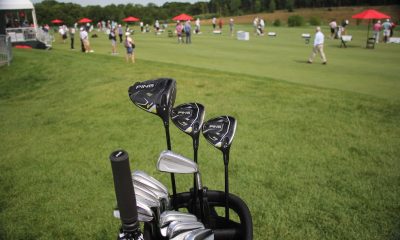
 Whats in the Bag2 weeks ago
Whats in the Bag2 weeks agoSeamus Power WITB 2023 (June)
-

 Whats in the Bag3 weeks ago
Whats in the Bag3 weeks agoOmar Morales WITB 2023 (June)
-

 Whats in the Bag3 weeks ago
Whats in the Bag3 weeks agoBlayne Barber WITB 2023 (June)
-

 Whats in the Bag3 weeks ago
Whats in the Bag3 weeks agoBen Carr WITB 2023 (June)
-
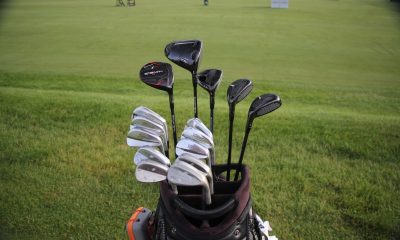
 Whats in the Bag2 weeks ago
Whats in the Bag2 weeks agoTom Hoge WITB 2023 (June)
-

 19th Hole3 weeks ago
19th Hole3 weeks agoJournalist alleges this is the ‘unforgivable’ act Phil Mickelson committed against Pat Perez and his wife
-
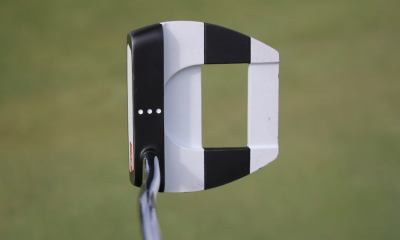
 News2 weeks ago
News2 weeks agoKeegan Bradley’s winning WITB: 2023 Travelers Championship













